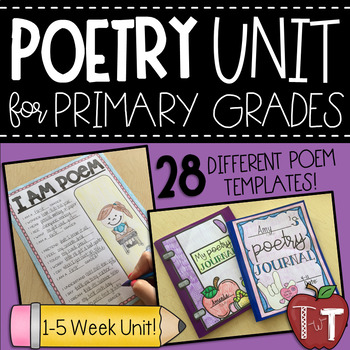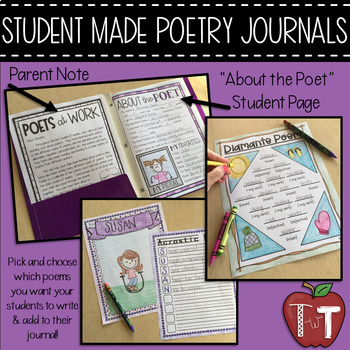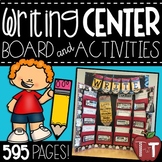Poetry Unit for Primary Grades {Poetry Journal for Poetry Month}
- PDF
What educators are saying
Also included in
- Do you want an all-inclusive, low maintenance writing center that is filled with many different meaningful writing activities for your students?! Then this 595 page download is what you are looking for! This bundle has everything you need to set up a writing center for the entire year! It coversPrice $35.99Original Price $65.45Save $29.46
Description
This poetry unit makes writing poetry simple and fun for your students! It is also a teacher friendly unit that has everything you need in one download! No prep needed, simply print and teach!
This unit covers a total of 28 different poems. Each poem has a teacher explanation sheet with a poem example, as well as a writing template for your students to use as they write their own poem!
This unit can be covered in a 1-5 week time frame, depending on how long you want to spend on each type of poem.
The poems your students write can be compiled in a folder and made into their own personal poetry journal. The templates and examples make writing poetry so easy for your students, you can also make this into a poetry writing center!
The following is included in this unit:
-Cover Page and Binder Spine to make your own Poetry Teacher Binder
-Teaching Notes
-Poetry Battle Activity with Bracket and Voting Ballets
-Ranking Poetry Worksheet
-What is Poetry? KWL Chart
-Teaching Posters for: What is Poetry?, What is a Poet’s Purpose?, Poems Can Have.., We Know Poetry…, and Poetry Form
-Figurative Language Posters for: Rhyme, Rhythm, Metaphor, Simile, Hyperbole, Alliteration, Repetition, Personification, Onomatopoeia, and Imagery
-2 Poetry Journal Cover Pages
-About the Poet Page
-Our “Poetree” Poster to display with your student’s poetry in the hallway
-Poets at Work parent letter to send home with their poetry journal
The 28 poems covered in this unit; each with an explanation sheet, poem example, and writing template include:
-2-Worder Poem
-5 Senses Poem
-Acrostic Poem
-Adjective Poem
-Alphabet Alliteration Poem
-Bio Poem
-Cinquain Poem
-Color Poem
-Couplet Poem
-Diamante Poem
-Free Verse Poem
-Haiku Poem
-Holiday Poem
-I Am Poem
-I Like Poem
-I Wish Poem
-If I Were Poem
-If It Weren’t For You Poem
-Important Poem
-I’m So Smart Poem
-ing Poem
-Limerick Poem
-List Poem
-Quatrain Poem
-Shape Poem
-Triplet Poem
-Who, What, When, Where, Why Poem
-Word Picture Poem
Click HERE to read more about my Poetry Unit and to find a list of my favorite poems to read to my students!
Looking for this product in a BUNDLE? Click HERE!






